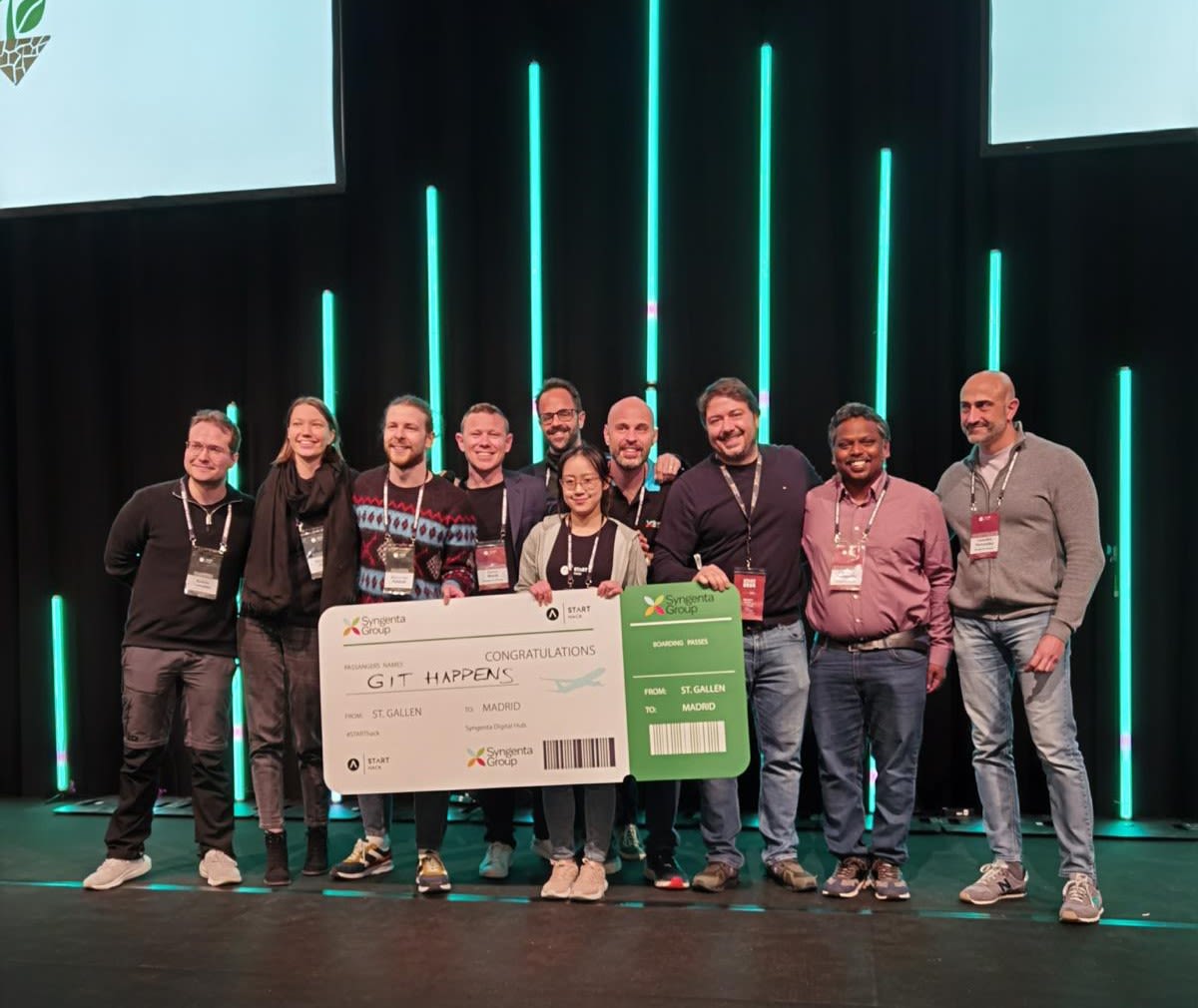HACKING THROUGH
THE WEEDS

For those outside the world of agriculture, it is easy to assume that farming and technology are very distant from one another, but new technology and digital services are becoming ever more essential for farmers world-wide. The pressures of population growth and limits to the available farmland means that every piece of land used for food production must be made as productive as possible. Leveraging advances in technology means land can be made productive and farmers can have confidence in their decision-making processes.
The charming Swiss town of St Gallen, tucked between the Alps and the shore of Lake Constance is known for its famed Rococo Cathedral and an abundance of idyllic views. It might be the last place one would expect to find the worlds of technology and agriculture colliding.
But St Gallen is also a center for disruptive innovation, home to one of the largest student-led tech conferences in Europe. Developed and led by students from the HSG, one of Europe’s leading universities, START Hack, runs across three days every March. The conference brings together over 600 young hackers, students, and tech entrepreneurs to partner with some of the biggest businesses on the planet.
The centerpiece of the event is the 36-hour hackathon, challenging tech developers and creatives to use innovative technology and new thinking to solve complex, real-world problems. Industry partners come along to the event and present the cases that participants are asked to solve. This year, among those industry partners for the very first time, was the agricultural technology company Syngenta Group.
NEW TECH,
NEW SOLUTIONS

As Marco Issenmann from Syngenta pointed out, new tech is rapidly transforming agriculture. Satellite imagery is used to help diagnose crop diseases that are invisible to the naked eye, and farmers already gather real-world data at every stage of the growing process. Tools like Syngenta's popular Cropwise digital agriculture platform helps farmers choose the right crops for a specific field to monitoring soil health. These new tools lead to new digital practices, designed to let farmers work with greater precision and in a productive, sustainable way.
The company, supporting farmers as they take on the challenge of feeding an ever-growing population is always on the lookout for new collaborators and came to the hack hoping that the participants could offer new ways of thinking about this global problem.
For Rolf Bolthauser, one of the hackers at the event, Syngenta’s challenge of modelling the impact of farmer choices was genuinely exciting, letting developers do something that would not normally get to work on. Rolf wasn’t alone either – 20 teams of hackers were tackling the Syngenta case. The teams produced an immense range of projects, working on everything from a farming Airbnb concept and catchy AI-produced musical farming advice, to engaging agri-games for students. All the teams highlighted an incredibly array of technical skill, handling rich historical and live data with a real passion for the global impact that agriculture can have.
Farmers using a digital agriculture tool
Farmers using a digital agriculture tool
Hackers in action
Hackers in action
THE WINNING
TEAM

However, only one team could be crowned the winner when the 36 hours were up. After a tough choice for the Syngenta judges, taking the top spot, and a chance to visit Syngenta’s Digital Innovation Hub in Madrid, was the team GIT HAPPENS. The team, Andres, Sasha, Michelle and Ekatarina are a mix of different nationalities and areas of expertise. The group brought together their unique backgrounds in computer science, satellite imaging, artificial intelligence (A.I.) and robotics to create HARVEST. This was a tool designed for governments to help smallholders (who are often last on the list when new innovations are developed). The HARVEST tool provides information on every parcel of land within a given area, state or region, detailing the crops grown, estimate yields and even give farmers advance warning of disease before crops are lost.
The winning team, GIT HAPPENS
The winning team, GIT HAPPENS
As Andres put it, it is slightly strange that people don’t think of agriculture as being a high technology field. He pointed out the very first applications of the industrial revolution, developed by scientists like Fritz Haber, were all aimed at improving agriculture. Michelle explains that the team deliberately wanted to focus on developing something that would help smallholders as innovative technology often comes with high implementation costs that are prohibitive for smaller farms.
Sasha describes how the team came to a solution: “the way we looked at it was by asking isn't a government just a big farm that has lots of different fields? We just zoomed out from the small farm into the bigger layer and even though the farms are not owned by the same person, the government is the dome that encompasses all the small farms. So, we can provide something for the government that can then be passed on to all those smaller farms.”
Ekaterina, with her background in satellite imaging, advocated for the challenge as something worth pursuing: “We took a lot of time for the ideation process, so we didn't have as much time for hacking as I thought. But it was a crucial component of our success because we were searching for a problem we could solve, and even though we did take our time, that process helped us to arrive at the right place.”
Facing a problem this size and having just 36 hours to develop a solution means every minute counts. Andres goes on to explain that after taking time to identify a specific problem, the first day was all about communication. “The folks at Syngenta were really helpful” he tells me. “We researched a lot about precision farming, what the challenges are and how to deal with them. When we had done that, we only had half of the hackathon remaining for coding. But once you identify the problem, we knew how to build a solution.”





